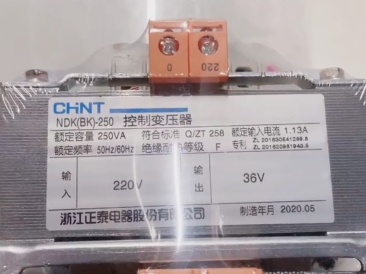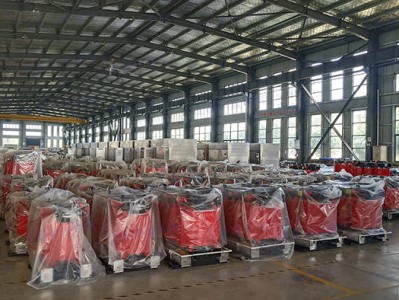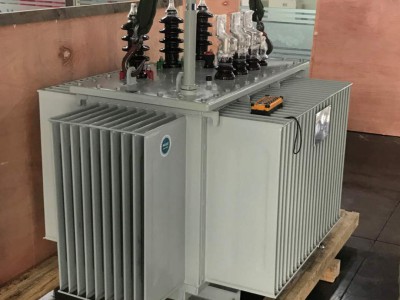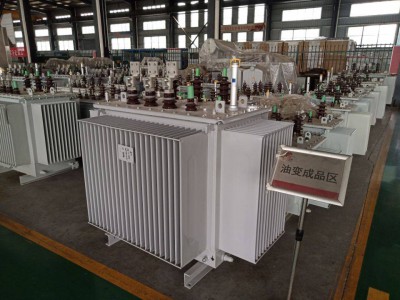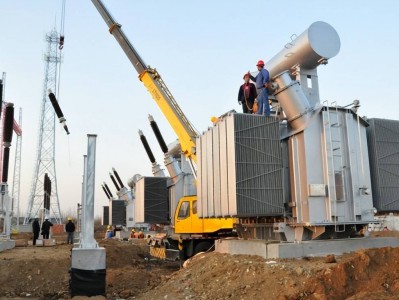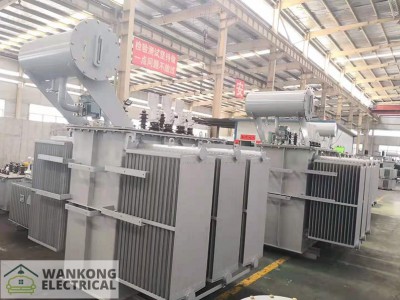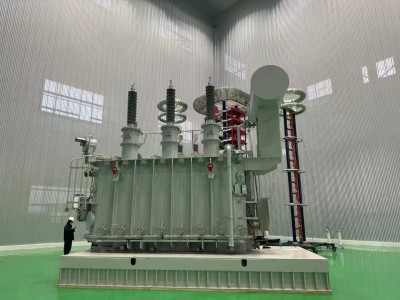D11 10KV oil-immersed power transformer
Product description
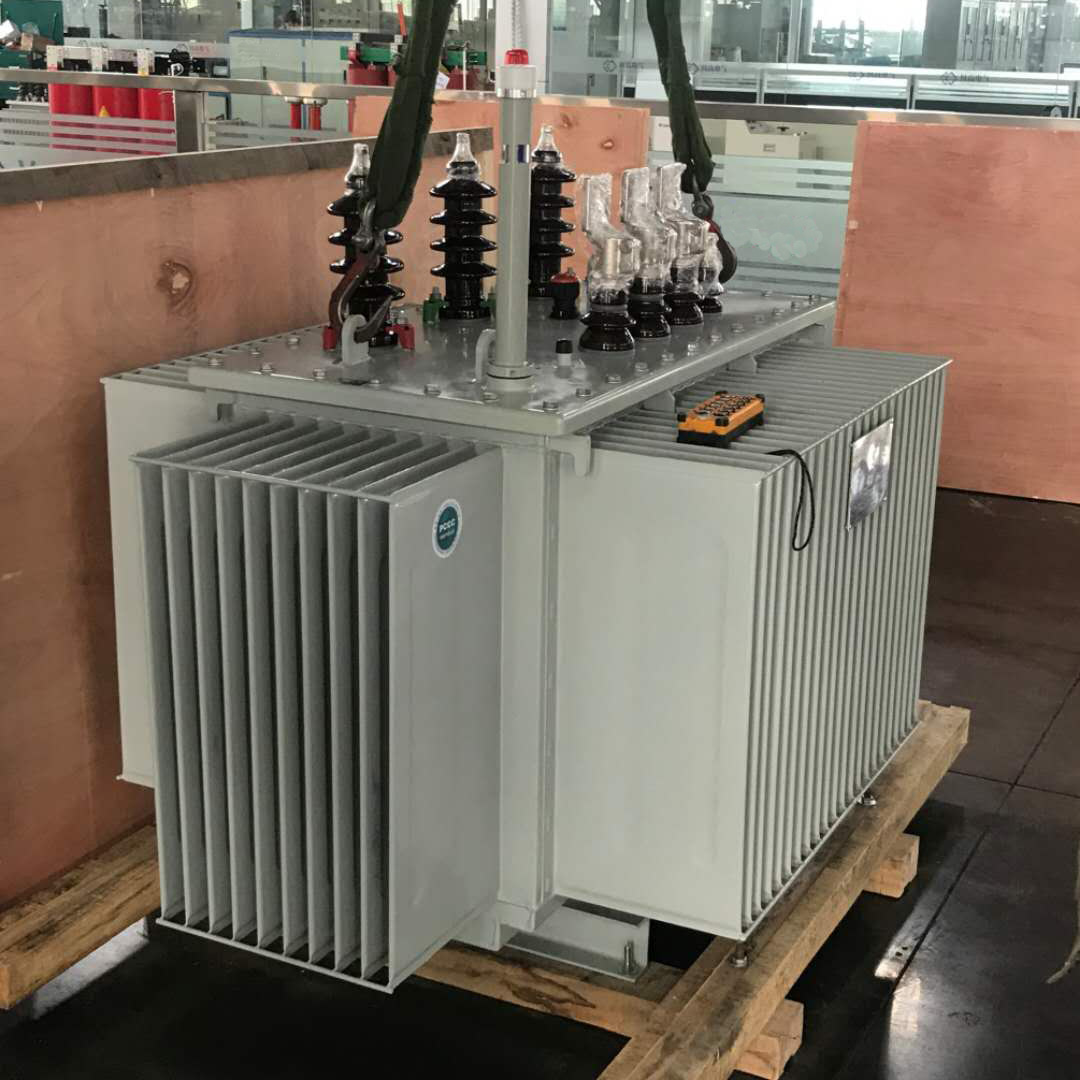 The D11 series 10KV oil-immersed power transformer is a common distribution transformer. Here is a detailed introduction for you:
The D11 series 10KV oil-immersed power transformer is a common distribution transformer. Here is a detailed introduction for you:
- **Product features**:
- **Excellent insulation performance**:
It can effectively prevent leakage and discharge phenomena between the internal winding and the external environment, ensuring the stable operation of the transformer. For example, in harsh environments such as humidity or dust, it can still maintain reliable insulation effect.
- **Good heat dissipation performance**:
The oil-immersed design enables the heat generated by the transformer during operation to be effectively dissipated through insulating oil, reducing the internal temperature of the transformer and avoiding equipment failures and performance degradation caused by overheating, ensuring that the transformer can operate at full load for a long time.
- **High-efficiency electromagnetic conversion efficiency**:
Adopting high-quality core materials and optimized winding design to minimize energy loss during the conversion process and improve the transmission efficiency of electric energy, thus achieving the purpose of energy saving and consumption reduction and reducing the electricity cost for users.
- **Low-noise operation**:
Through advanced design and manufacturing processes, the mechanical vibration and electromagnetic noise generated during the operation of the transformer are effectively controlled, so that the noise level is low during operation, reducing noise pollution to the surrounding environment. It is especially suitable for places with high noise requirements such as residential areas and commercial areas.
- **Technical parameters**:
- **Rated voltage**:
Usually 10KV. This is the standard voltage level for the transformer to be connected to the power system to ensure normal matching and stable connection with the power grid.
- **Rated capacity**:
Generally, it covers a wide range. Commonly, there are 5kVA - 1000kVA or even larger. It can meet the power consumption needs of different scales. For example, small factories, shopping malls, office buildings, etc. can choose transformers of appropriate capacity according to their own power consumption needs.
- **Connection group label**:
Commonly, such as Ii0, etc. The connection group label determines the connection method and phase relationship of the transformer windings. It is crucial for the parallel operation of multiple transformers or the cooperation with other electrical equipment to ensure the output of correct voltage and current waveforms.
- **Insulation level**:
For example, when the voltage level for one-minute power frequency withstand voltage is 10KV, the test voltage is usually 35KV; when the peak value of the impulse test voltage is at 10KV full wave, it is 75KV, and when it is chopped wave, it is 85KV, etc. These insulation level parameters ensure that the internal insulation structure of the transformer can withstand the corresponding voltage stress without being damaged during normal operation and when subjected to overvoltage impacts, ensuring the safe and reliable operation of the transformer.
- **No-load loss and load loss**:
No-load loss refers to the power consumed by the transformer in the no-load state (that is, the secondary side is open). Load loss is the power loss generated by the transformer when it is operating with load due to reasons such as winding resistance and core eddy current. For D11 series transformers of different capacities, the standard values of no-load loss and load loss are different, and the load loss is allowed to have a certain percentage (such as 5%) of positive error. For example, for a 50kVA transformer, the no-load loss may be several hundred watts, and the load loss depends on the specific load situation, but it should meet the standard requirements within a certain range.
- **Impedance voltage**:
It reflects the impedance size of the internal winding of the transformer and is usually expressed as a percentage, such as 3.5% - 4%, etc. Impedance voltage is of great significance for short-circuit current calculation of transformers, setting of protection devices, and load distribution during parallel operation of transformers. A reasonable impedance voltage value can ensure that the transformer limits the size of short-circuit current in case of faults and protects the transformer and other electrical equipment from excessive short-circuit current impacts.
- **Environmental requirements for use**:
- **Altitude**:
Generally, it is required not to exceed 1000m. If this altitude is exceeded, due to the reduction of atmospheric pressure and thin air, the heat dissipation effect and insulation performance of the transformer will be affected. Special design or derating use of the transformer may be required to ensure its normal operation.
- **Ambient temperature**:
The maximum temperature is usually not more than +40℃, the minimum temperature is not lower than -40℃, and the maximum daily temperature difference is 25K. When used in an environment outside this temperature range, it may lead to accelerated aging of the internal insulation materials of the transformer, difficulty in heat dissipation and other problems, affecting the service life and performance of the transformer.
- **Relative humidity**:
The average monthly relative humidity does not exceed 90%, and the average daily relative humidity does not exceed 95%. High humidity environments can easily cause the insulation parts of the transformer to get damp, reduce the insulation resistance, increase the risk of leakage, and even may cause insulation breakdown and other faults. Therefore, moisture-proof measures need to be taken, such as installing in a dry and ventilated place or using moisture-proof materials.
- **Pollution level**:
According to different usage areas and environmental conditions, the pollution level is generally divided into levels I, II, III, etc. In areas with a high pollution level, such as environments with a large amount of dust, salt or other pollutants, the external insulation surface of the transformer is prone to accumulate dirt and reduce insulation performance. It is necessary to strengthen the protection measures of the external insulation, such as increasing the creepage distance, using anti-pollution insulators or performing regular cleaning and maintenance.
- **Installation method**:
It can be installed indoors or outdoors. When installed indoors, pay attention to good ventilation and convenient maintenance and repair. At the same time, it should be prevented from being too close to other equipment or objects to affect heat dissipation and operation; when installed outdoors, factors such as rain protection, sun protection, and wind and sand prevention need to be considered. Usually, corresponding protective enclosures or rain shelters and other facilities will be equipped.
- **Application scenarios**:
- **Industrial field**:
Widely used in various factories to provide stable power support for production equipment. For example, in mechanical processing factories, it supplies power to equipment such as machine tools and cranes; in chemical enterprises, it guarantees the power demand during the chemical reaction process to ensure continuous and stable production and avoid production accidents and economic losses caused by power outages.
- **Commercial center**:
Places like large shopping malls, supermarkets, office buildings, etc., where many electrical equipment such as lighting, air conditioning, and elevators need reliable power supply. The D11 series 10KV oil-immersed power transformer can meet the large-capacity and high-stability power consumption needs of these places and ensure the normal operation of commercial operations.
- **Power system**:
In power facilities such as substations and distribution stations, as a key equipment for power transmission and distribution, it converts high-voltage electric energy into low-voltage electric energy suitable for users. For example, it converts 10KV high-voltage electricity into 380V or 220V low-voltage electricity for use by residential households and small commercial users.

